Citroën
XM
|
|
|
Sales
of
Citroën's CX had been in decline for some years
and the decision was taken to design its
replacement in conjunction with Peugeot's new top
of the range model, the 605. This meant employing
a common floor pan, engines and transmissions as
was the case for the Citroën BX and the Peugeot
405. The body style and the suspension were to be
pure, unadulterated Citroën.
|
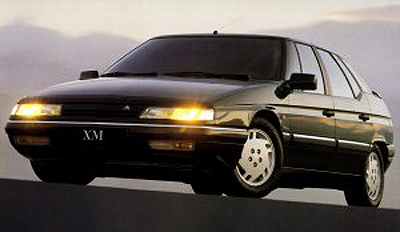 |
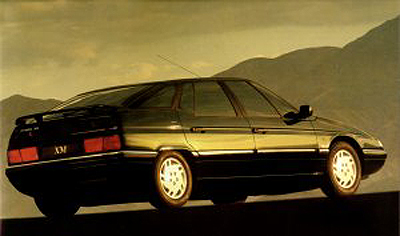 |
|
The
father
of the new car was Marc Deschamps, a designer who
had left Bertone to go to Heuliez Torino, the
Italian subsidiary of the French company Heuliez.
He drew the first sketches of the new project
which was given the code names V-80
to Y-30 A number of design studies were
undertaken and eventually approval was given to
that proposed by Bertone.
|
 |
The
striking
visual identity of the new car, in an era when
most cars are beginning to look similar to one
another, was achieved by creating a band of light
around the car, comprising an enormous glass area
- with no less than thirteen individual sheets of
glass.
|
|
In
traditional
big Citroën style, there is a large front overhang
and minimal tail overhang. Unusually, the rear
wheels are fully exposed although some of the
prototypes had them partially covered by the rear
wings. The XM's shape is not only elegant and
practical, it is also extremely aerodynamic,
achieving a Cd factor of only 0.28.
|
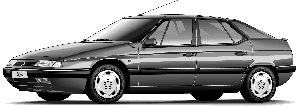 |
|
The
XM was the first vehicle to be fitted with Hydractive
suspension ; a refinement of Citroën's well
established Hydropneumatic
suspension first launched on the 15 CV H of
1952. The XM employs two additional spheres that
can be switched in or out of circuit to vary the
degree of softness. Sensors attached to the
steering, accelerator pedal, brakes, vehicle body
and gearbox are connected to a computer that
continuously varies the both the suspension spring
rates and damping to provide a soft ride for
comfort and a taut ride for handling and road
holding. A switch enables the driver to leave the
computer to its own devices or to offer a firmer
`sports' setting.
|
 |
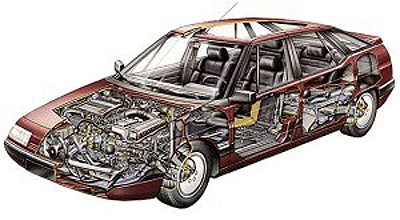 |
|
The
XM
was put on sale on 23 May 1989 and was built at
the Rennes factory in Brittany. Initially, it was
available in three versions, two 2 litre, fuel
injection versions and one V6 3 litre. In 1990, a
new, simplified model was introduced with a
carburettor version of the 2 litre and two
diesels, a normally aspirated and a turbocharged
version. Three trim variants were offered -
Séduction, Harmonie and Ambiance.
In
1991, a new 24 valve version of the V6 was offered
and in 1992, a Break or estate car was launched.
In
1993,
the XM Turbo CT was launched and the trim variants
were subtley altered, together with change of
names from Séduction and Harmonie to Sensation and
Présence.
|
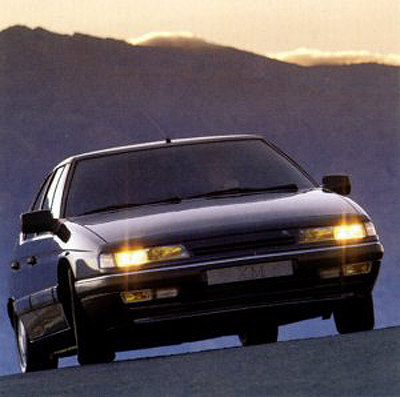 |
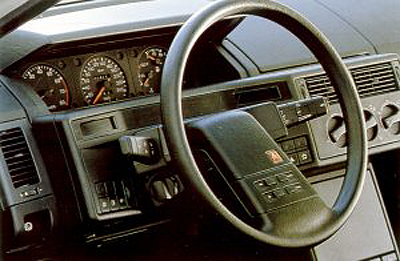 |
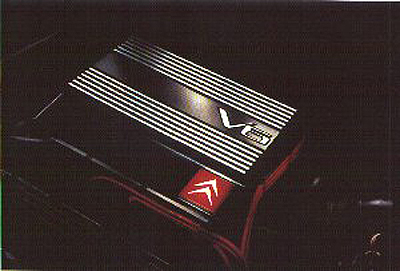 |
|
A
new trim called Exclusive was also launched. In
1993, the car was fitted with Hydractive II
suspension as pioneered on the Xantia. In 1995,
the XM nose was lightly restyled, the dashboard
was reworked and the chevrons migrated to their
rightful place in the centre of the grill.
|
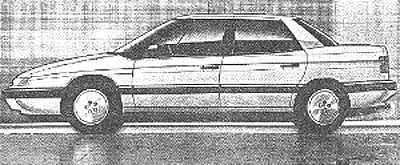 |
The
XM
was intended to spearhead PSA's return to the
North American market and was designed to comply
with US Federal safety standards. It was felt that
a three
box, traditional saloon would sell better
than the two box hatchback in this market and
design studies were undertaken.
|
| ©
1997 Julian Marsh |
|
|
|